State of Alabama
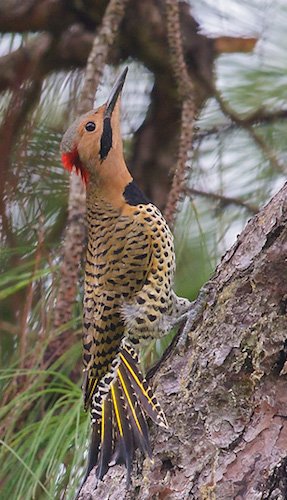
Alabama is a state in the Southeastern region of the United States. It borders Tennessee to the north, Georgia to the east, Florida and the Gulf of Mexico to the south, and Mississippi to the west. Alabama is the 30th largest by area covering nearly 136,000 km2 (c.52,500 square miles) and the 24th-most populous with c. 5.15 million inhabitants. Its largest cities are Birmingham (largest metropolitan area), Huntsville (largest city), the state capital Montgomery, Jefferson, Mobile and Tuscaloosa.
About three-fifths of the land area is part of the Gulf Coastal Plain, a gentle plain with a general descent towards the Mississippi River and the Gulf of Mexico. The North Alabama region is mostly mountainous, with the Tennessee River cutting a large valley and creating numerous creeks, streams, rivers, mountains, and lakes. In fact, it has the second-largest inland waterway system in the United States. Alabama’s land consists of 22 million acres (89,000 km2) of forest or 67% of the state’s total land area.
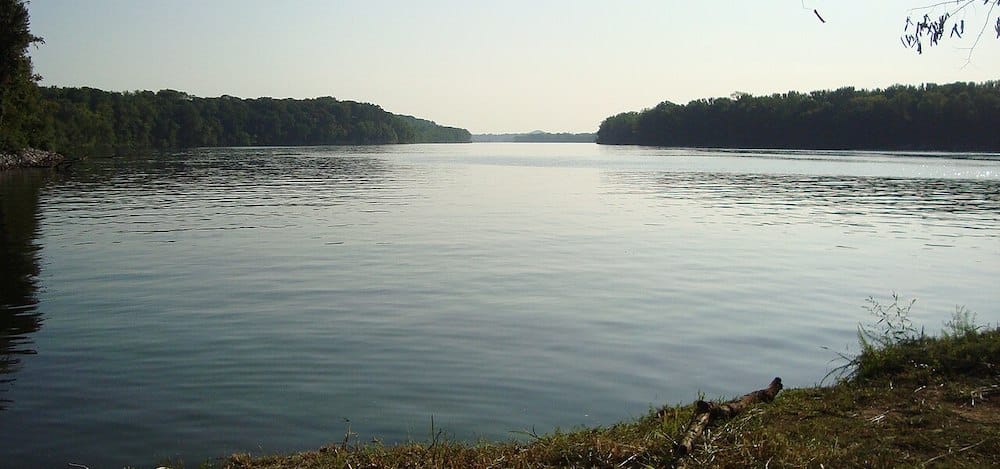
Tennessee River – ©US National Park Service, Public domain, via Wikimedia Commons
The state is classified as humid subtropical and has an average annual temperature is 18 °C. Temperatures tend to be warmer in the southern part of the state with its proximity to the Gulf of Mexico, while the northern parts of the state, especially in the Appalachian Mountains in the northeast, tend to be slightly cooler. Generally, Alabama has very hot summers and mild winters with copious precipitation throughout the year, receiving an average of 56 inches of rainfall annually and thus enjoys a lengthy growing season of up to 300 days in the southern part of the state.
Summers in Alabama are among the hottest in the US, with high temperatures averaging over 32 °C throughout the summer in some parts of the state. It is also prone to tropical storms and hurricanes. Areas of the state far away from the Gulf are not immune to the effects of the storms, which often dump tremendous amounts of rain as they move inland and weaken. It is also one of the states with the most tornadoes. Winters are generally mild very rarely falling below freezing point and only getting a dusting of snow on northern high ground a few times a year.
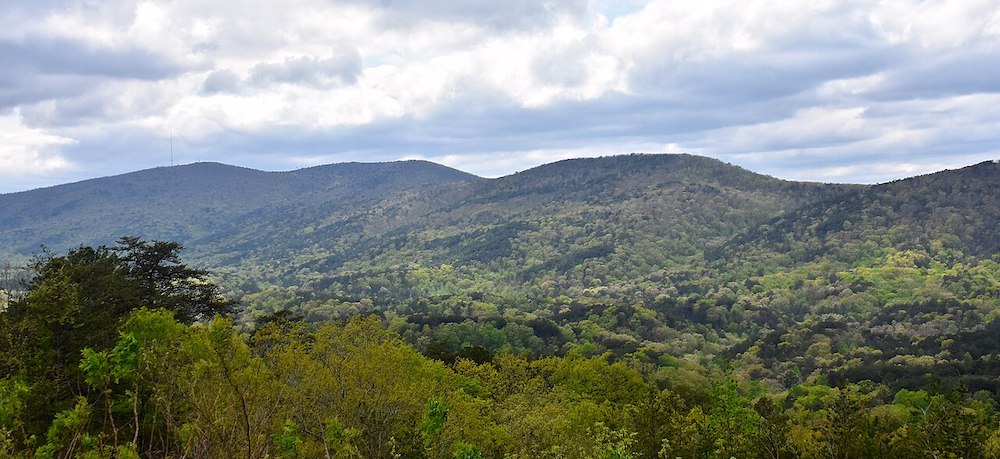
Cheaha Mountains – ©Skye Marthaler, CC BY-SA 4.0 via Wikimedia Commons
The National Park Service managed areas include Horseshoe Bend National Military Park near Alexander City; Little River Canyon National Preserve near Fort Payne; Russell Cave National Monument in Bridgeport; Tuskegee Airmen National Historic Site in Tuskegee; and Tuskegee Institute National Historic Site near Tuskegee. Additionally, it has four National Forests: Conecuh, Talladega, Tuskegee, and William B. Bankhead.
Alabama is home to a diverse array of flora and fauna in the subtropical coniferous forest biome and once boasted huge expanses of pine forest, which still form the largest proportion of forests in the state. Habitats range from the Tennessee Valley, Appalachian Plateau, and Ridge-and-Valley Appalachians of the north to the Piedmont, Canebrake, and Black Belt of the central region to the Gulf Coastal Plain and beaches along the Gulf of Mexico in the south. The state is usually ranked among the top in nation for its range of overall biodiversity.
Indigenous animal species in the state include 62 mammal species, 93 reptiles, 73 amphibians, over 300 native freshwater fish species, and 420 bird species that spend at least part of their year within the state.
Birding Alabama
From its northern rolling Appalachian foothills southward to its glistening white Gulf Coast beaches, Alabama attracts both birds and birdwatchers alike. With more than 1,600 square miles of freshwater tributaries and approximately 34,000 square miles of forested land, Alabama offers an abundance of water and plant life. The state provides residence, both temporary and permanent, for about 350 bird species and also serves as a prime migration route for hundreds of species each year.
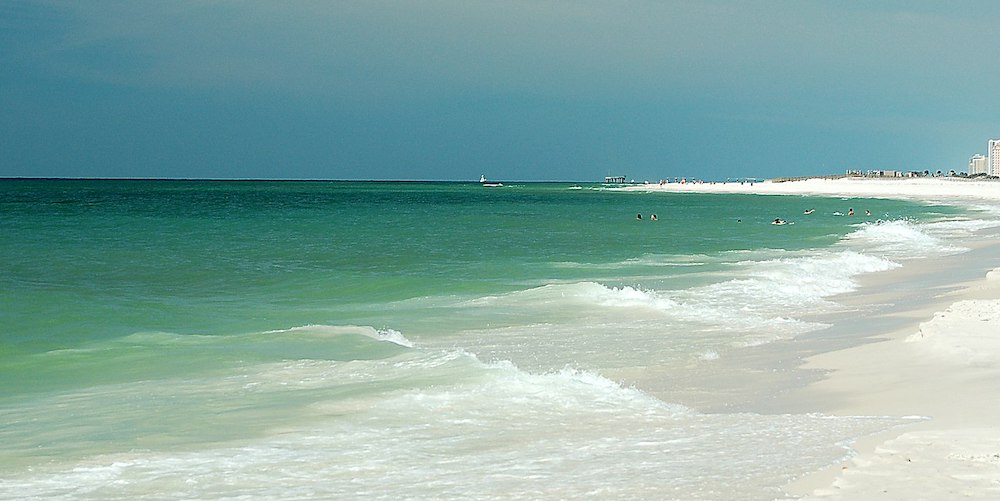
Gulf State Park – ©Jodybwiki, CC BY-SA 3.0 via Wikimedia Commons
The Tennessee Valley region, with it’s large bodies of inland water formed by the Tennessee River and its impoundments, serves as a wintering ground for tens of thousands of ducks and geese. More than 50,000 ducks of various species and 30,000 Canada Geese winter in Wheeler Wildlife Refuge, east of Decatur in Morgan County. Birdwatchers have recorded seeing at least eighty-seven bird species nesting in the refuge in summer months.
Alabama’s heavily forested mountain region offers several prime locations for viewing birds. DeSoto State Park, near Fort Payne in Dekalb County, provides excellent viewing of many woodland species, including Pileated Woodpeckers, Carolina Chickadees, and a variety of warblers.
Within the confines of the lush hemlock and spruce forests of the William B Bankhead National Forest, in southern Lawrence and Winston Counties, you can see Blue Jays, thrushes, vireos, hawks, owls, and other woodland birds.
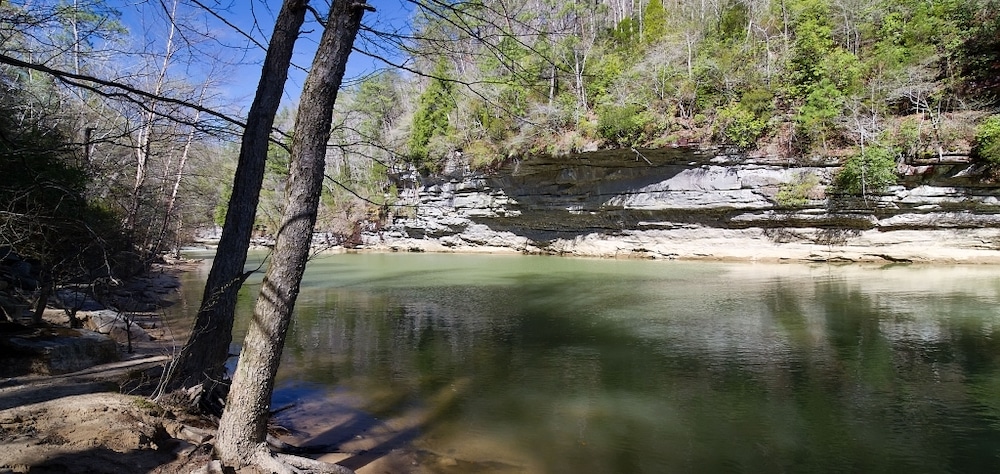
Clear Creek, Bankhead National Forest – ©Rian Castillo from Vestavia Hills, USA, CC BY 2.0 via Wikimedia Commons
Alabama’s Piedmont and upper coastal regions serve as the transition from the state’s mountains region to its grasslands. Taking a road trip through Greene and Sumter Counties in western Alabama will give you the opportunity to see grassland birds, including Eastern Meadowlarks, American Kestrels, and several species of sparrow. Wood Storks, Mississippi Kites and Swallow-tailed Kites are frequent visitors to this area during the summer months as well.
Birdwatchers will find Choctaw National Wildlife Refuge, in the lower coastal plain in Choctaw County, a treasure-trove. At last recording, sixty-seven species have been seen nesting within the refuge boundaries.
Another birding hotspot in the lower coastal plain is Eufaula National Wildlife Refuge, in Barbour County, which borders the Chattahoochee River and extends into western Georgia. With almost 50 percent of its 11,000 acres covered with water, this refuge has become a favourite stopover for migrating waterfowl and, occasionally, Bald Eagles. Birdwatchers have recorded seeing more than 240 species at this refuge. A favourite winter visitor is the Sandhill Crane.
Alabama’s Gulf Coast region, in Baldwin and Mobile Counties, attracts such a wealth of bird life that it boggles the mind. The mixed habitat of thick hardwood and cypress forests coupled with brackish wetlands and an extensive coastline provide excellent opportunities to see a large variety of birds. At least 126 species have been known to nest and 289 species have been seen on the dunes, beaches, pine-oak forests, and brackish lakes of Bon Secour National Wildlife Refuge, near Gulf Shores off Alabama 180.
Dauphin Island, also in the Gulf Coast region, has been listed by many major birdwatching publications as one of the top ten spots in the United States to see migratory birds. On any given spring or fall day when the weather conditions are right, this 14-mile-long barrier can become inundated with birds. When this happens in early spring, it’s called a fall out, something every birder longs to see. Neotropical migrants that have flown non-stop across the Gulf of Mexico use Dauphin Island as a refuelling stop before making their way north to their breeding grounds. The birds arrive tired and hungry, making them easy to approach. You can often see as many as ten species in a single tree – a birdwatcher’s and photographer’s dream come true.
(‘Birding Alabama’ is an excerpt from the book: All About Alabama Birds by Fred J. Alsop III, Sweet Water Press, 1997)
-
Number of bird species: 468
(As at October 2024)State Bird: Northern Flicker Colaptes auratus locally known as the 'yellowhammer'
-
Alabama ornithological Society
PDF ChecklistField Checklist of Alabama Birds -
Avibase
PDF ChecklistThis checklist includes all bird species found in Alabama , based on the best information available at this time. It is based on a wide variety of sources that I collated over many years. I am pleased to offer these checklists as a service to birdwatchers. If you find any error, please do not hesitate to report them. -
Wikipedia
Annotated ListAs of January, 2022, there were 452 species on the official list.[1] Of them, 161 are considered accidental, 13 of which are further considered "Category B" as defined below. -
eBird
PDF ChecklistThis checklist is generated with data from eBird (ebird.org), a global database of bird sightings from birders like you. If you enjoy this checklist, please consider contributing your sightings to eBird. It is 100% free to take part, and your observations will help support birders, researchers, and conservationists worldwide.
-
A Birder's Guide to Alabama
| By John F Porter | Alabama University Press | 2001 | Spiralbound | 368 Pages + 75 B&W Illustrations & 50 Maps | ISBN: 9780817310523 Buy this book from NHBS.com -
A Guide to the Birds of the Southeastern States: Florida, Georgia, Alabama, and Mississippi
| By John H Rappole | Florida University Presses | 2006 | Paperback | 336 pages, 420 colour photos, 379 distribution maps | ISBN: 9780813028613 Buy this book from NHBS.com -
Alabama Bird Watching: A Year-Round Guide
| By Bill Thompson III | Cool Springs Press | 2004 | Paperback | Out of Print | ISBN: 9781591860990 Buy this book from NHBS.com -
Alabama Birds: An Introduction to Familiar Species
| By James Kavanagh | Waterford Press | 2001 | Unbound | ISBN: 9781583551301 Buy this book from NHBS.com -
Birder's Guide to Alabama and Mississippi
| By R Vaughan | Rowman & Littlefield | 1994 | Paperback | 232 pages, B/w illustrations, maps | ISBN: 9780884150558 Buy this book from NHBS.com -
Birder's Guide to Alabama and Mississippi
| By Ray Vaughan | Rowman & Littlefield | 1994 | Paperback | 232 Pages | ISBN: 9780884150558 Buy this book from NHBS.com -
Birds of Alabama
| By Marc Parnell | Naturalist & Traveler Press | 2022 | Paperback | 308 pages, colour photos| ISBN: 9781954228252 Buy this book from NHBS.com -
Birds of Alabama Field Guide
| By Stan Tekiela | Adventure Publications | 2022 | Edition 2 | Paperback | 392 Pages + Colour Photos & Maps | ISBN: 9781647552954 Buy this book from NHBS.com
-
Alabama Coastal BirdFest
InformationThe beauty of the Alabama Gulf Coast is no secret. Residents and guests alike enjoy the natural elements Alabama’s beaches offer. -
Festival of the Cranes
WebpageThe Festival of the Cranes will be at Wheeler National Wildlife Refuge, southeast of Decatur. See thousands of wintering sandhill cranes as well as whooping cranes and white pelicans. Considered the easternmost refuge in the Mississippi Flyway, it attracts thousands of wintering waterfowl each year and is home to Alabama’s largest wintering duck population.
-
Alabama Museum of Natural History
WebsiteThe ornithological collection consists of bird skins, eggs, and nests. The skin collection, numbering nearly fifteen hundred specimens, rests largely on the work of two men. The work of the first, Dr. William Avery, an avid collector and observer of birds in the late 1800s near Greensboro, is a collection of bird skins which constitute almost one-half of the collection at the museum… -
NEW 401 - Birds and Birding
WebpageThis course will introduce students to the popular hobby of birding or bird watching. As such, basic field identification methods will be reviewed and practiced. We will also discuss larger conservation issues as they relate to birds. -
University of Alabama
WebpageThe University of Alabama Vertebrate Zoology Collection consists of numerous mammal and bird specimens, mostly collected from Alabama in the late 19th and mid-20th centuries, and a comparative skeletal collection.
-
Alabama Audubon
WebsiteThe mission of ALABAMA AUDUBON has been to promote conservation and a greater knowledge of birds, their habitats, and the natural world since our inception in 1927. We invite you to learn more about what we do, join us out in the field, and help us to protect the natural heritage of America’s fourth-most biodiverse state. -
Alabama Bird Records Committee
WebpageThe Alabama Bird Records Committee (ABRC) is the arm of AOS that reviews species sightings for admission to the official state records list, in order to assure the credibility and scientific value of the records. -
Alabama Ornithological Society
WebsiteThe Alabama Ornithological Society (AOS) was founded in 1952 to foster a greater knowledge of birds and to promote conservation of all natural resources. The purpose of this site is to share information about birds and birding in Alabama, and to promote conservation of bird habitat. -
Audubon Delta
WebsiteCovering the Mississippi Flyway -
Cullman Audubon
WebsiteMeetings, contacts and newsletters… -
Francis M Weston Audubon Society
WebsiteOur purpose is to promote the understanding and preservation of wildlife and the environment that supports it. Our goals are preserving, protecting, and restoring wildlife habitat. Our main activities are advocacy, education, and volunteer projects. -
Hummingbird Research, Inc.
WebsiteFred began researching winter hummingbirds in the southeastern United States in 1997 with a primary focus on south Alabama and Florida. From 1998 to 2008, Fred banded 1,598 wintering hummingbirds of ten species in those two states. His ground-breaking research was documented in "Wintering hummingbirds in Alabama and Florida: species diversity, sex and age ratios, and site fidelity," a scientific paper coauthored with Doreen Cubie and published in the June 2009 issue of the Journal of Field Ornithology, a peer-reviewed publication -
Mobile Bay Audubon Society
WebsiteThe Mobile Bay Audubon Society, founded in 1971, is a chapter of the National Audubon Society. Our mission is to promote the conservation of Earth`s biological diversity by encouraging an appreciation of birds and other wildlife, along with an understanding of the ecological requirements necessary to their survival -
Nature Conservancy in Alabama
WebpageWelcome to the home page of the Alabama Chapter of The Nature Conservancy! Here you'll find information on the many ways we're working with the people of the state and the nation to help preserve the diversity of living things by protecting the habitats - land, water, and air - in which they live… -
North Alabama Birdwatcher's Society
WebsiteThe North Alabama Birdwatchers Society (NABS) is truly a birding group for everyone, from beginners to experts. We will visit a variety of beautiful areas across northern Alabama , most of which are included on the North Alabama Birding Trail (NABT). By birding with NABS you'll have the opportunity to go out with experienced people who are familiar with the areas we visit and who love to share their knowledge. NABS also provides greater access to certain natural areas where birding by car is restricted to groups -
Shoals Audubon Society
WebsiteThe Shoals Audubon Society serves The Shoals area of northwest Alabama with active members in Florence, Sheffield, Tuscumbia, Muscle Shoals, and Russelville. Our membership extends to Lauderdale, Colbert, Franklin, and Lawrence counties of Alabama as well as Lawrence county, Tennessee… -
Tennessee Valley Audubon Society
Facebook PageWelcome to TVAS! We're the local Audubon Society serving the Limestone, Madison, and Morgan county area of North Alabama, including Huntsville, Decatur, Madison, and Athens.
-
*Protected areas of Alabama
InformationSatellite ViewStae Parks, Forests, Reservoirs etc -
Alabama Birding Trails
WebsiteSatellite ViewWith 270 sites covering Alabama from the mountains to the gulf, the Alabama Birding Trails provide a roadmap of the best public lands to watch the birds. Over 430 different bird species have been spotted in Alabama. Come see what you can find! Get out and explore! -
Alabama Coastal Birding Trail
WebsiteSatellite ViewThe Alabama Coastal Birding Trail (ACBT) describes the birding spots most frequented by Alabama birders. This trail was developed during the late 1990s and officially opened soon afterward to offer bird enthusiasts an opportunity to view and enjoy a high diversity of bird species representative of Alabama’s Gulf Coast and to promote birding through tourism in the region. -
Alabama's Parks
WebpageSatellite View28 State Parks • 4 State Forests • 1 State Fish Hatchery 2 State Nurserys • 7 State Wildlife Management Areas • 1 State Wildlife Refuge 1 State Fish Hatchery • 4 National Forests • 1 National Historic Landmark 2 National Historic Sites • 1 National Historic Park • 10 National Wildlife Refuges -
Audubon Bird Sanctuary on Dauphin Island
WebpageSatellite ViewAlthough first colonized in the 1600s, it was not until 1954 that a 3 1/2mile bridge was built connecting Dauphin Island to the mainland. During this development phase, the Dauphin Island Park and Beach Board was created to provide recreation opportunities for the citizens of Alabama… -
Dauphin Island Bird Sanctuaries
ArticleSatellite ViewDauphin Island , Alabama is one of the top birding spots in the Southeast. An incredible 347 species have been reported on the island. Spring migration is the first landfall for many Neotropical birds who make the 600-mile flight across the Gulf of Mexico from the Yucatan Peninsula. Under adverse weather conditions, large flocks of exhausted birds of many species may seek shelter on the Island in a truly spectacular 'fall-out'. -
NF William B Bankhead
InformationSatellite ViewWithin the forest lies the Sipsey Wilderness, with a host of wildlife and an abundance of swift streams, limestone bluffs, and waterfalls. -
NWA Little River
WebpageSatellite ViewLittle River is unique because it flows for most of its length atop Lookout Mountain in northeast Alabama. Forested uplands, waterfalls, canyon rims and bluffs, pools, boulders, and sandstone cliffs. -
NWR Bon Secour
WebpageSatellite ViewWith over 360 different species of birds documented on the refuge, Bon Secour is a birder's paradise. Spring and fall bring an array of color with spectacular migratory bird populations traveling between their breeding and wintering grounds. -
NWR Cahaba River
WebpageSatellite ViewCahaba River NWR is one of nation's newest National Wildlife Refuges, the 540th in fact. It was established September 25, 2002 for the purpose of protecting and managing a unique section of the Cahaba River and land adjacent to it. Cahaba River NWR is home to five federally listed species including the Cahaba shiner, goldline darter, round rocksnail, and cylindrical lioplax snail. -
NWR Choctaw
WebpageSatellite ViewAlthough what is now Choctaw National Wildlife Refuge was once part of the territory belonging to the Choctaw Nation of Indians, there is little left today to remind us of this Indian history except for the names of local streams… -
NWR Eufaula
WebpageSatellite Viewhe Chattahoochee River valley historically provided thousands of acres of seasonal wetlands. These wetlands were inundated by winter floods, slowly dried throughout the growing season, and were again flooded the following winter. As the flooded areas dried in the spring, they were colonized by plants. Many of these plants produced seed that became food for migrating waterfowl in the winter. Because the river rarely floods, the refuge uses a system of pumps and other water control structures to mimic the historic conditions, and provide a valuable resource to wintering birds. -
NWR Fern Cave
WebpageSatellite ViewHere at Fern Cave National Wildlife Refuge, there is a unique array of residents living in the cave, in addition to the endangered bats. One survey expedition by a biologist and geologist documented cave fish (Typhlichthys subterraneous), bluegill (Lepomis machrochirus), yellow bullhead catfish (Ictalurus natalis), cave salamanders (Eurycea lucifuga), northern slimy salamanders (Plethodon glutinosus), honey-colored crickets (Othoptera: Euhadonecus), mosquitoes (Diptera: Clulicidae), crane flies (Tipulidae), heliomyzid flies (Diptera: Heliomyzidae), frogs (Anura), and white millipedes (Diplopoda). Above ground, white-tailed deer, turkeys, migratory songbirds, squirrels, opossums, raccoons, and rabbits abound. -
NWR Key Cave
WebpageSatellite ViewThe Refuge consists of rolling grassland, upland hardwoods, and crop land. Past farming practices have led to severe soil erosion problems. Initial management efforts were focused on controlling erosion, thus enhancing the water quality entering the underground cave system to benefit the endangered species inhabiting Key Cave. -
NWR Mountain Longleaf
WebpageSatellite ViewMountain Longleaf National Wildlife Refuge is situated within the Southern Appalachian Mountain Range between Atlanta, Georgia (90 miles) and Birmingham, Alabama. The refuge is situated along the rugged landscape of Choccolocco Mountain, one of the highest mountain ridges in Alabama. High elevation vistas (2063 feet ASL) provide an array of beautiful fall colors and breathtaking views of the surrounding region. Hardwood forests along mountain ridges contain species typical of the Blue Ridge Mountains to the north, while slopes and lower elevations are covered by longleaf pine and hardwoods commonly associated with the Coastal Plain. -
NWR Sauta Cave
WebpageSatellite View -
NWR Watercress Darter
WebpageSatellite ViewThe watercress darter is a small, very colorful fish measuring up to 2.5 inches in length. The fish is currently found in only five sites in the upper Black Warrior River drainage near Birmingham, Alabama. They are found only at mid-depths in dense accumulations of aquatic vegetation including watercress, in springs and spring runs. -
NWR Wheeler
WebpageSatellite ViewWheeler National Wildlife Refuge provides excellent habitat for many species of native wildlife. A total of 300 species of birds, 47 species of mammals, 75 species of reptiles and amphibians, 115 species of fish, 38 species of freshwater mussels, and 26 species of freshwater snails have been documented on the refuge. -
Ruffner Mountain Nature Preserve
WebsiteSatellite ViewA 1000-acre nature preserve in the heart of the city, dedicated to preservation, education, and recreation for everyone. Ruffner Mountain Nature Center is an oasis of green space in the midst of Alabama's largest city. Watch for hawks in the sky and lizards in the woods. Explore the sites of now-abandoned iron ore mines and a former limestone quarry. Learn about natural and industrial history on one of our naturalist-led programs. -
SP DeSoto
InformationSatellite ViewIt borders the Little River, which flows into the nearby Little River Canyon National Preserve. The 104-foot-tall (32m) DeSoto Falls, the state's highest waterfall, is found in a separate part of the park 6 miles (9.7 km) north of the main park. -
SP Lake Guntersville
WebpageSatellite ViewBut winter is the best time to find a greater variety of animals including loons that migrate to the area from northern climes, canada geese, several species of herons, a broad selection of ducks, and perhaps the most spectacular of all, the bald eagle!
-
Alabama Rare Bird Alert
Facebook Sightings -
Birding Alabama
Facebook GroupThis is a group to share photos, sightings, and any other information pertaining to birding in Alabama -
eBird
SightingsAlabama Rare Bird Alert
-
Bird Treks
Tour OperatorBird Treks has been providing small group and custom birding tours for over 20 years. Visit their website to see the incredible tours available, including Dauphin Island, Alabama! -
Naturalist Journeys
Tour OperatorJoin Naturalist Journeys for a spring migration tour! Discover Dauphin Island, one of North America’s top spring migration destinations! Of Alabama’s 445 bird species, 95% have been seen here. This is where migrants first see land after crossing over the Gulf; a critical rest and rejuvenation stop. -
Southern Birding Tours
Tour OperatorFrom white sand beaches along the shores of the Gulf of Mexico to the most biodiverse location in the United States, Alabama’s Gulf Coast provides an amazing array of native and migratory birds, classic Southern hospitality and diverse cultural and historical sites that combine in an unparalleled birding tour experience. -
The Joe Farm
Local Tour Operatorhis focus on the outdoors via birding and nature walks will expand the holistic health practices that are becoming part of the local fabric through ergotherapy or the use of agricultural settings for treatment and rehabilitation. -
Ventures Birding
Tour OperatorSpring Migration on the Gulf Coas
-
2016 [03 March - May] - Bruce Wedderburn - Southeast USA for Spring Migration
ReportThis was a two-month trip to southeast USA for Yvonne and myself, from late March through to late May, with a focus on the Spring migration, in particular the highly varied and colourful warblers. -
2017 [04 April] - Andrew Haffenden
PDF ReportWe then headed south to Dauphin Island, where along the causeway and bridge Snowy Egret, Brown and White Pelicans, Double-crested Cormorant, Royal, Caspian, and Forster’s Terns, and Osprey were seen... -
2021 [04 April] - Andrew Haffenden
PDF ReportArrival day birding began about 3pm, and in 3 hours we had over 60 species racked up, including specialty regional Reddish Egret, and often at the difficult end of getting such as Ovenbird and Worm-eating Warbler. An early Prairie Warbler was also nice, and the start of our daily sightings of Scarlet and Summer Tanagers, Blue and Rose-breasted Grosbeak, Indigo Bunting and Prothonatory Warblers started this afternoon. Unfortunately, Larry and Fran got the start date wrong and were unable to join us until after lunch Monday, but they pretty much caught up on everything we saw, save some shorebirds -
2022 [04 April] - Drew Haffenden
PDF Report... Early April is always an interesting time on Dauphin, as Spring migrants are arriving yet some of our winter birds remain. So, it proved today, as the group saw new arrivals Hooded and Black-and-white Warblers, but also over-winterers such as Yellow-bellied Sapsucker and Yellow-rumped Warbler. After the Shell Mounds we went to the small airport on the island, well-known among birders for being one of the best places anywhere to see Clapper Rail, which many people have heard but never seen, and often other marsh birds...
-
Bee on the Brow B&B
AccommodationBee on the Brow is a beautiful mountain retreat. The newly established Bed and Breakfast in Mentone, AL offers stunning views atop Lookout Mountain and boasts four luxurious guest suites that provide tranquility for a romantic getaway, a haven from life’s stress and fatigue, or a home base station for adventure in Northern Alabama. -
Grand Hotel Golf Resort & Spa
AccommodationWith over 430 bird species documented in Alabama, the Eastern Shore of Mobile Bay is an ideal location for bird-watching year-round. -
Lake Guntersville B&B
Accommodation"Aerie" is another name for a bird's nest. Our local area has 5 locations on the North Alabama Birding Trail and we have named this room in tribute to the many species of birds in our area. -
The Ville
AccommodationA slice of paradise! Private entrance directly to Audubon Bird Sanctuary & East End beach from property. Brand New remodel - 2024.Amazing second story private Dauphin Island guest house.
-
Alabama Birding Trails
WebsiteWith over 430 bird species documented in Alabama, there’s more to see here than you can imagine. Watching a Bald Eagle feeding babies in the nest near Guntersville State Park? Check! Sitting quietly as dozens of Rose-breasted Grosbeaks literally crash-land into the nearest tree on Dauphin Island. Absolutely! These are just two of the stops along this series of 8 trails and 280 stops. -
Outdoor Alabama
WebsiteBirds are warm-blooded (body temperature is internally regulated and constant, regardless of the external temperature), egg-laying, feathered vertebrates with forelimbs modified to form wings.

